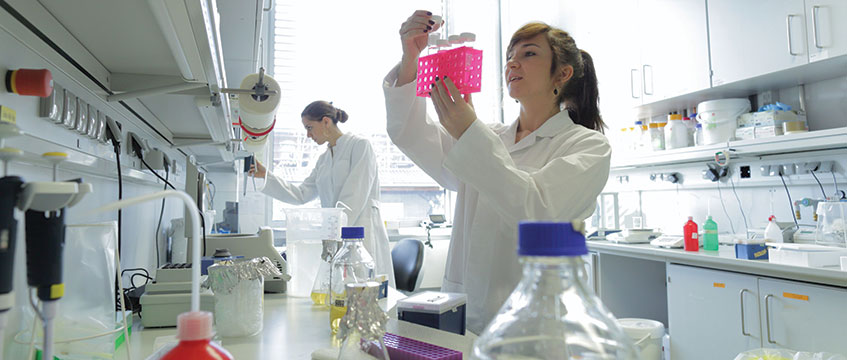What value do clusters add to real estate? We take a look at three to see what market impact they are having
Cambridge Bio-science
Some 19 affiliates of Cambridge University have been awarded Nobel Prizes since 2000. The city has the highest proportion of high-skilled workers in the UK, so it is no surprise that it has performed well on economic growth metrics in recent years.
Its bio-science (and tech cluster) has helped push it to the top of the table for GVA growth projections according to research by Irwin Mitchell/CEBR (see Cambridge regional investor guide) and as Tom Goodwin, real estate analyst at Aviva Investors points out, its property market was the fastest to recover after the financial crash.
Rents for lab space grew by 3% last year, according to Bidwells, which is forecasting annualised growth of 1.4% for the next five years.
Aviva chose Cambridge as one of its investment clusters. It owns Chesterfield Research Park and is forward funding an office development in the city centre.
“One of the important things was the link between employers and graduates. In Cambridge there is a natural crossover, particularly given that the private sector employment is quite research based,” says Goodwin.
“For pharmaceuticals and life sciences, the long-term prospects for those seem resilient. It doesn’t look like there will be robots taking over that sort of work.”
US listed REIT Liberty Property Trust is another long-term investor in the city. Along with Countryside Properties it is jointly developing 90 acres of expansion land on the 170-acre Cambridge Biomedical Campus where AstraZeneca is due to open its 850,000 sq ft global research, development centre and corporate headquarters this year.
Andrew Blevins, managing director at Liberty Property Trust UK, agrees that public-partnership is a key strength: “Commercialising research is key and that takes collaboration.”
What might stymie growth? Housing. The cluster employs a lot of support staff – lab technicians, for example – for whom housing affordability is a concern.

Cambridge: An occupier’s view
Sophie Costello is co-founder and chief executive of Costello Medical, which is taking 21,000 sq ft at Brookgate and Aviva Investors 50/60 Station Road in Cambridge.
She’s from Cambridge and while other places were an option for the business – her clients are international – the university and availability of staff with the right skills made the city the ideal choice.
The business is nine years old and also has an office in London, because some staff prefer to work in the capital, but Costello says investment in Cambridge city centre, particularly around the station, has helped make the city more “London-like”.
“We are a people-based firm and want to attract the best people, so being in desirable offices, in a desirable place and with the links of university we are willing to bear the costs of the rents,” she says.
Transport infrastructure – congestion – is an issue. And as the business grew from a back-bedroom venture to fully fledged employer, finding affordable and flexible office space was also an issue.
Sheffield Advanced manufacturing
Most of the companies based in the Sheffield city region’s advanced manufacturing cluster regard themselves as engineering or technology businesses, says Rachel Clark, director of trade and investment at Sheffield City Region Combined Authority
Steel mills have been replaced by R&D and collaboration with the area’s universities to create a 2,000-acre Advanced Manufacturing Innovation District which has helped attract the likes of Rolls-Royce, Boeing and McLaren Automotive. This has had a knock-on effect for the wider market (see A developer’s view, below).
The number of advanced manufacturing businesses in Sheffield has grown by 53% in six years to 338 with an increase in jobs of 17% to 6,000. When Boeing’s and McLaren’s facilities open this number will rise.
Access to the right sort of property remains an issue. “The local authority has worked with developers to bring forward space on a speculative space. When that has happened on the Advanced Manufacturing Park, space has gone very quickly,” says Clark.
“Speculative development needs to happen more but there has been a nervousness in the market about speculative development. It creates a challenge if you are competing with other parts of Europe for investment coming in, if you haven’t got space ready or there is a wait for it to be ready.”
Bristol: creative tech
Home of Wallace & Gromit creators Aardman and the BBC’s nature division, Bristol has a creative tech cluster and has seen the amount of space being leased rise exponentially in recent years.
Cushman & Wakefield’s Phil Moore says 28% of take-up was TMT businesses last year, the most dominant sector “by some margin” in the city centre. In 2016 it was 14%.
Investment in co-working space and incubator hubs have helped fuel interest, but more is needed, he warns, as property remains a big issue for these businesses.
“We can’t have property hold it back. Landlords can’t really continue to churn out the standard category-A fit-out if they want to secure these businesses,” he says.
The main problem is the gap between start-up space and more traditional, longer-lease space.
Local business Ultrahaptics is a case in point. The virtual touch tech company was set up in 2013 using technology developed at Bristol University. By 2014 it had five employees; by 2016 that had risen to 40, and last year the headcount was 80.
The company started out at the Engine Shed before locating to 1 Glass Wharf, where it went from 7,000 sq ft to 14,000 sq ft in roughly 12 months.
But that requires a large element of flexibility from the landlord as well as a leap of faith in the covenant strength of the business.
Headline rents broke the £30 per sq ft barrier last year, rising to £32.50 with secondhand rents now up to £28 per sq ft, according to Alder King
 Sheffield: A Developer’s view
Sheffield: A Developer’s view
Harworth Estates is developing a mixed-used scheme on 740 acres of former industrial land at Waverley which includes the Advanced Manufacturing Park, part of AMID. EG asked Iain Thomson, associate director, about the cluster effect.
What value does a cluster add to real estate?
If clustering is considered as “placemaking”, this has added an enormous amount to real estate in recent years in creating sustainable new developments. Sites where clusters of high-value employment have been created have driven demand for residential and supporting uses. This in turn supports an acceleration of housebuilding in sustainable locations; at the neighbouring Waverley residential site that we’ve masterplanned, 750 homes have been built over the past five years by four different housebuilders.
From an investment point of view, how big a part do clusters play in investment decisions?
Attracting big names to invest in clusters acts as a magnet for further investment. If you consider Rolls-Royce and McLaren Automotive’s investment at the AMP on the back of their technological partnerships with the University of Sheffield’s advanced Manufacturing Research Centre, this has led to a number of tier two and tier three advanced manufacturing companies wanting to co-locate.
As at January 2018, 1,500 people are now employed within the AMP. This critical mass has led to serious prelet interest from a number of retailers to take space within the new local centre, with 60% of planned space already in legals.
Are there any downsides?
Clusters come forward only if two specific elements are in place: strong co-ordination of effort from public and private partners, and patience. This is needed to develop the skills of the local labour force, to prepare a suitable land supply and to properly masterplan the entirety of the development in the long term.
This has happened at Waverley and the AMP. The University of Sheffield is producing 200-plus world-class people at its centre to work with industry on an annual basis, while we have taken a long-term view on masterplanning, have instituted a full design code on residential development and protected advanced manufacturing uses only at the AMP with Rotherham Council.
The upshot of this approach is that the AMP is now considered to be the “Mayfair” address of advanced manufacturing, underpinning the recent decisions of businesses such as McLaren to invest here.











